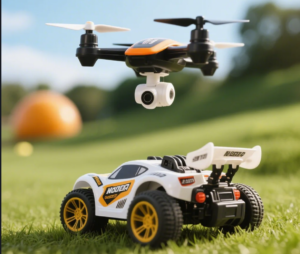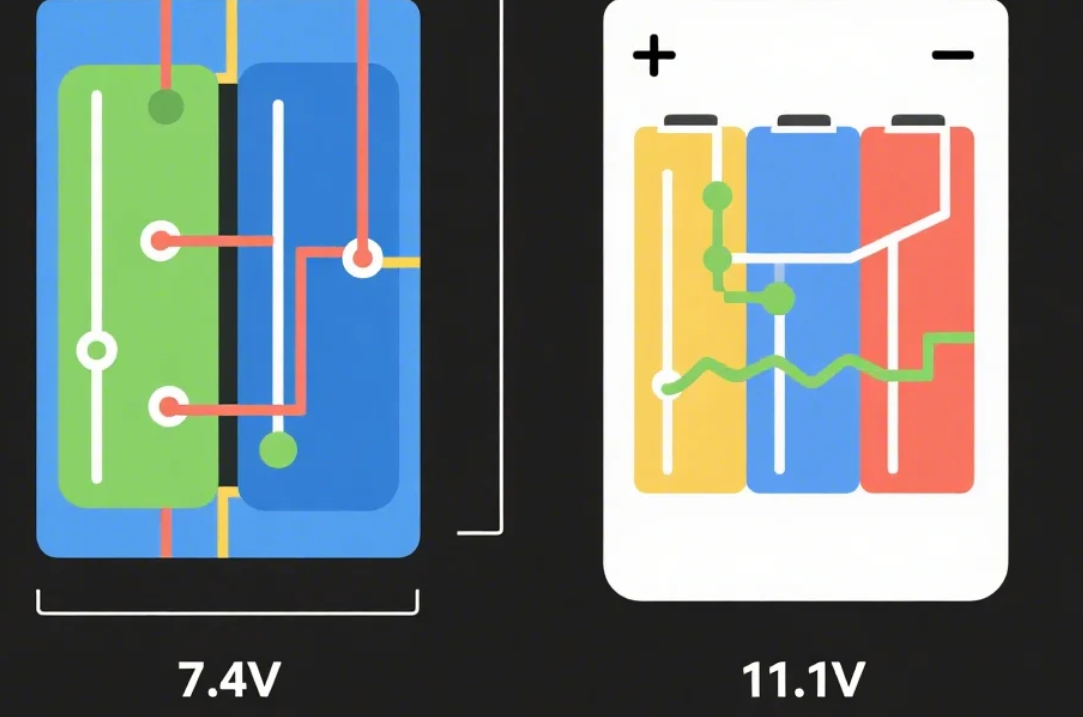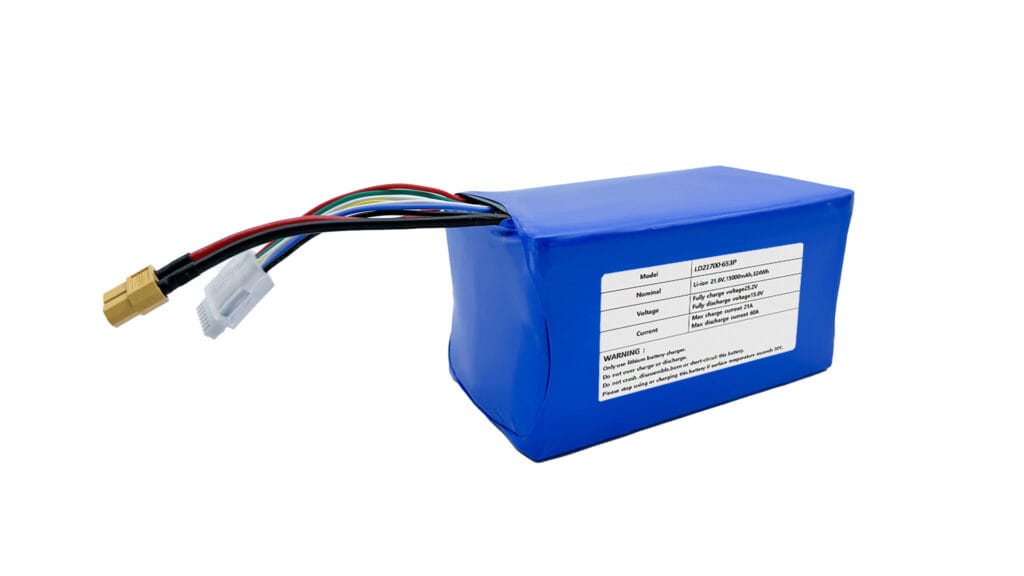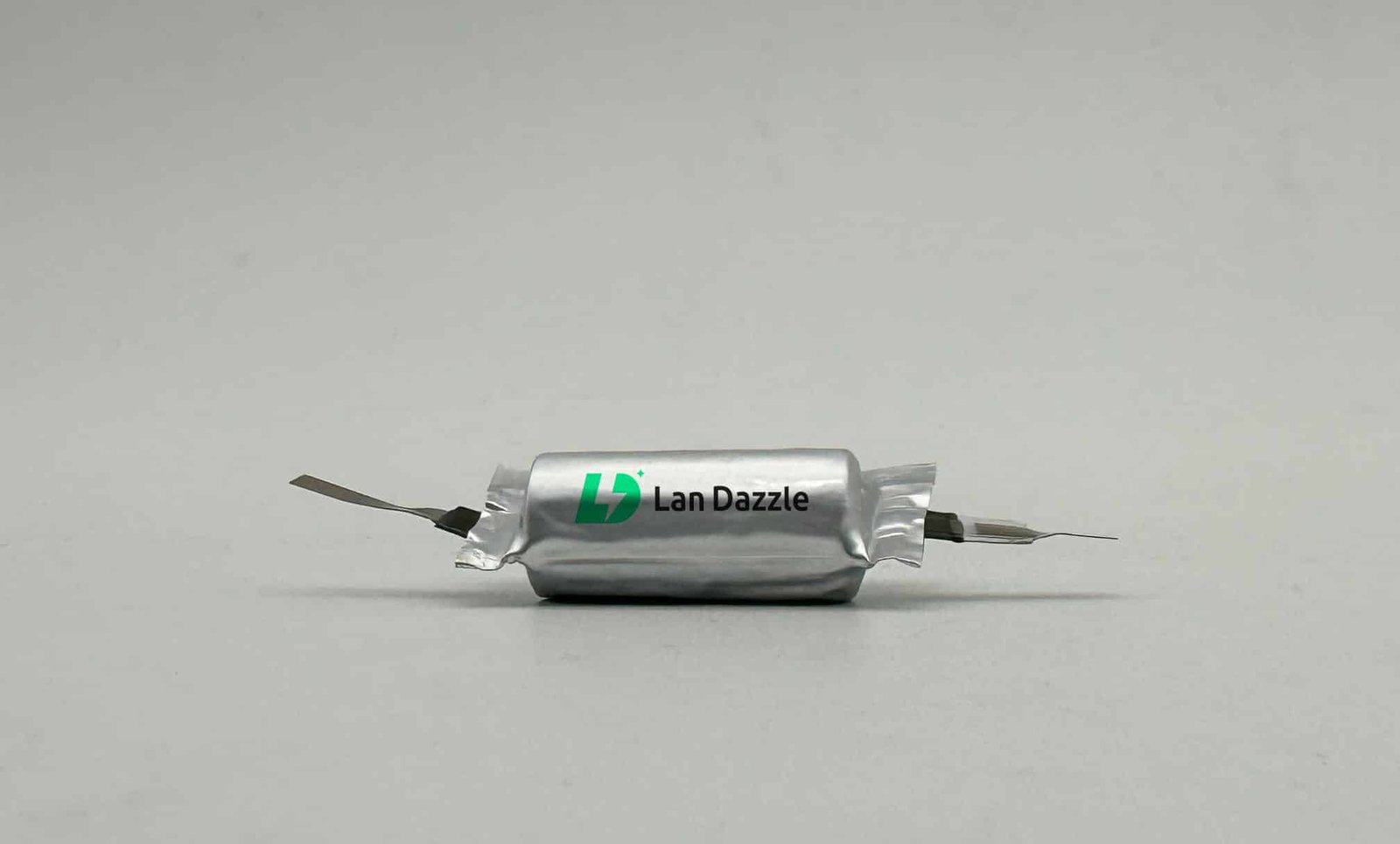Akumulatory litowo-polimerowe (LiPo) zrewolucjonizowały świat pojazdów sterowanych radiowo (RC), dronów i innych gadżetów wymagających dużej mocy. Ich wysoka gęstość energii i lekkość sprawiają, że idealnie nadają się do zastosowań, w których wydajność i przenośność są najważniejsze. Jednak poruszanie się po świecie akumulatorów LiPo może być zniechęcające, zwłaszcza w obliczu oznaczeń takich jak "2S" i "3S". Zrozumienie różnicy między akumulatorem lipo 2s a 3s ma kluczowe znaczenie zarówno dla entuzjastów, jak i profesjonalistów, aby zoptymalizować wydajność, zapewnić bezpieczeństwo i podejmować świadome decyzje zakupowe.
Ten kompleksowy przewodnik zagłębia się w niuanse baterii 2s lipo i 3s lipo, badając ich podstawowe cechy, wpływ na wydajność, typowe zastosowania i kluczowe czynniki, które należy wziąć pod uwagę przy wyborze między nimi. Niezależnie od tego, czy jesteś doświadczonym weteranem RC, czy nowicjuszem, który dopiero zaczyna, ten artykuł wyposaży Cię w wiedzę, która pozwoli Ci z pewnością wybrać odpowiednie źródło zasilania dla Twoich potrzeb.
Podstawowe informacje o akumulatorach LiPo
Zasadniczo akumulator LiPo składa się z pojedynczych ogniw połączonych szeregowo lub równolegle w celu uzyskania pożądanego napięcia i pojemności. Oznaczenie "S", widoczne w 2S i 3S, wskazuje liczbę ogniw połączonych w szereg. seria. Każde standardowe ogniwo LiPo ma napięcie nominalne 3,7 V. Dlatego akumulator LiPo 2S składa się z dwóch ogniw połączonych szeregowo, co daje napięcie nominalne 7,4 V (2 x 3,7 V). I odwrotnie, akumulator 3S LiPo składa się z trzech ogniw połączonych szeregowo, co daje napięcie nominalne 11,1 V (3 x 3,7 V).
Ta różnica w liczbie ogniw, a w konsekwencji w napięciu, jest głównym czynnikiem różnicującym te dwa typy akumulatorów i dyktuje ich charakterystykę działania.
Akumulator 2S LiPo: zrównoważona moc i wydajność
Akumulator 2S LiPo o napięciu znamionowym 7,4 V oferuje zrównoważone połączenie mocy i wydajności.
Kluczowe punkty:
- Napięcie: Działa przy nominalnym napięciu 7,4 V, z typowym zakresem napięcia od 6,0 V (przy rozładowaniu) do 8,4 V (przy pełnym naładowaniu).
- Moc wyjściowa: Zapewnia umiarkowany poziom mocy, odpowiedni do zastosowań, w których ekstremalna prędkość lub moment obrotowy nie są głównym wymaganiem.
- Waga i rozmiar: Generalnie lżejsze i bardziej kompaktowe w porównaniu do akumulatorów 3S o podobnej pojemności, co przyczynia się do lepszej zwinności i dłuższego czasu lotu / pracy w zastosowaniach wrażliwych na wagę.
- Zastosowania: Powszechnie spotykane w samochodach RC dla początkujących, mniejszych dronach (takich jak mini-quady) i aplikacjach, w których priorytetem jest płynniejsze dostarczanie mocy i wydłużony czas pracy. Niższe napięcie często przekłada się na łatwiejszą do opanowania krzywą mocy dla początkujących użytkowników.

Odpowiednie statystyki/dane: Wiele podstawowych samochodów RC i mikro dronów wykorzystuje akumulatory 2S, często zapewniające czas pracy w zakresie 10-20 minut w zależności od pojazdu i zastosowania.
Potencjalne przykłady/studia przypadków: Początkujący kupujący swój pierwszy pojazd RC buggy może zdecydować się na akumulator 2S ze względu na łatwość sterowania i dłuższy czas zabawy. Podobnie, mały, zwinny dron wyścigowy przeznaczony do lotów w pomieszczeniach może skorzystać z mniejszej wagi konfiguracji 2S.
Akumulator 3S LiPo: Uwolnij zwiększoną wydajność
Podejście do 3S LiPo Akumulator zapewnia znaczny wzrost mocy i wydajności dzięki wyższemu napięciu nominalnemu 11,1 V.
Kluczowe punkty:
- Napięcie: Działa przy nominalnym napięciu 11,1 V, z typowym zakresem napięcia od 9,0 V do 12,6 V.
- Moc wyjściowa: Zapewnia znacznie wyższą moc, co przekłada się na większą prędkość, przyspieszenie (moment obrotowy) i udźwig. Dzięki temu idealnie nadaje się do bardziej wymagających zastosowań.
- Waga i rozmiar: Zwykle cięższe i nieco większe niż akumulatory 2S o porównywalnej pojemności ze względu na dodatkowe ogniwo. Może to mieć wpływ na ogólną wagę i wyważenie urządzenia.
- Zastosowania: Szeroko stosowany w średnio zaawansowanych i zaawansowanych samochodach RC (buggy, ciężarówki i pojazdy drogowe), większych i szybszych dronach (do wyścigów, freestyle i fotografii lotniczej) oraz innych zastosowaniach wymagających większej mocy wyjściowej.

Odpowiednie statystyki/dane: Akumulator 3S w tym samym samochodzie RC, jak wspomniano wcześniej, może potencjalnie zwiększyć prędkość maksymalną o 20-30%, chociaż czas pracy może spaść do 8-15 minut ze względu na wyższe zużycie energii.
Potencjalne przykłady/studia przypadków: Doświadczony kierowca rajdowy poszukujący maksymalnej prędkości i przyspieszenia na torze prawdopodobnie wybierze akumulator 3S. Podobnie, pilot drona, który musi podnosić cięższe ładunki lub osiągać większe prędkości podczas filmowania, zdecyduje się na zwiększoną moc konfiguracji 3S.
Podsumowanie kluczowych różnic: 2S vs 3S LiPo
Zasadnicza różnica między akumulatorem lipo 2s a 3s sprowadza się do liczby ogniw i wynikającego z niej napięcia. Różnica ta przekłada się kaskadowo na kilka kluczowych cech wydajności:
- Napięcie: Akumulatory 3S mają znacznie wyższe napięcie (11,1 V nominalnie) w porównaniu do akumulatorów 2S (7,4 V nominalnie).
- Moc i wydajność: Wyższe napięcie przekłada się bezpośrednio na większą moc, prowadząc do zwiększenia prędkości, momentu obrotowego i ogólnej wydajności w silnikach zaprojektowanych do jego obsługi.
- Waga i rozmiar: Ogólnie rzecz biorąc, akumulatory 3S są cięższe i nieco większe niż akumulatory 2S o podobnej pojemności.
- Zastosowania: Akumulatory 2S są często preferowane dla początkujących i aplikacji, w których priorytetem jest dłuższy czas pracy i mniejsza waga, podczas gdy akumulatory 3S są preferowane dla doświadczonych użytkowników i aplikacji wymagających wyższej wydajności.
- Koszt: Akumulatory 3S często mają nieco wyższą cenę ze względu na dodatkowe ogniwo i potencjalnie wyższą pojemność.
Wybór akumulatora odpowiedniego do potrzeb
Wybór między akumulatorem lipo 2s a 3s to krytyczna decyzja, która zależy od konkretnego zastosowania, poziomu umiejętności i pożądanej wydajności. Należy wziąć pod uwagę następujące czynniki:
- Zastosowanie: Co zasilasz? Podstawowy crawler RC może być idealnie dopasowany do 2S, podczas gdy szybki dron wyścigowy będzie prawdopodobnie wymagał 3S.
- Poziom umiejętności: Początkujący często uważają, że płynniejsze dostarczanie mocy przez akumulator 2S jest łatwiejsze do opanowania. Zwiększona moc 3S może być przytłaczająca dla tych, którzy wciąż się uczą.
- Pożądana wydajność: Jeśli priorytetem jest prędkość maksymalna i agresywne przyspieszenie, 3S to najlepszy wybór. Jeśli pożądane są dłuższe czasy pracy i bardziej kontrolowane wrażenia, lepszym wyborem może być 2S.
- Kompatybilność z ESC i silnikiem: Upewnij się, że elektroniczny regulator prędkości (ESC) i silnik są przystosowane do napięcia wybranego akumulatora. Korzystanie z akumulatora o wyższym napięciu niż to, do którego przystosowane są komponenty, może prowadzić do uszkodzenia lub awarii.
- Ograniczenia dotyczące wagi i rozmiaru: W zastosowaniach takich jak drony, dodatkowa waga i rozmiar akumulatora 3S może wpływać na czas lotu i zwrotność.
Bezpieczeństwo i obsługa
Niezależnie od tego, czy wybierzesz akumulator LiPo 2S czy 3S, przestrzeganie odpowiednich procedur bezpieczeństwa i obsługi jest najważniejsze. Akumulatory LiPo wymagają ostrożnego ładowania, przechowywania i obsługi, aby zapobiec uszkodzeniom i potencjalnym zagrożeniom. Zawsze używaj ładowarki LiPo, unikaj nadmiernego rozładowania i przechowuj baterie w chłodnym, suchym miejscu z dala od łatwopalnych materiałów.
Wnioski
Wybór między akumulatorem lipo 2s a lipo 3s zależy ostatecznie od dokładnej oceny konkretnych potrzeb i priorytetów. 2S oferuje zrównoważone podejście z możliwą do zarządzania mocą i potencjalnie dłuższym czasem pracy, idealne dla początkujących i niektórych zastosowań. 3S uwalnia większą moc i wydajność, zaspokajając potrzeby doświadczonych użytkowników i wymagających zastosowań, w których prędkość i moment obrotowy są kluczowe. Rozumiejąc podstawowe różnice w napięciu, mocy, wadze i zastosowaniach, możesz śmiało wybrać akumulator lipo 2s vs 3s, który najlepiej zaspokoi Twoją pasję.
Dla tych, którzy mają bardzo specyficzne wymagania, których gotowe opcje mogą nie spełniać, zbadanie Niestandardowa bateria lipo LanDazzle rozwiązania na landazzle.com lub proszę skontaktować się z nami pod adresem info@landazzle.com. Możemy zapewnić dostosowaną moc i współczynniki kształtu, aby zoptymalizować wydajność dla każdego unikalnego projektu.
FAQ
- Jaka jest główna różnica między akumulatorem LiPo 2S i 3S? Podstawową różnicą jest napięcie; 2S ma nominalne napięcie 7,4 V, podczas gdy 3S ma 11,1 V. Ta różnica w napięciu ma bezpośredni wpływ na moc wyjściową i wydajność.
- Czy akumulator LiPo 3S sprawi, że mój samochód RC będzie szybszy niż 2S? Tak, generalnie akumulator 3S sprawi, że samochód RC będzie szybszy, ponieważ wyższe napięcie pozwala silnikowi obracać się z wyższą prędkością RPM (obrotów na minutę).
- Czy mogę używać baterii 3S w urządzeniu zaprojektowanym dla baterii 2S? Nie, użycie akumulatora o wyższym napięciu niż to, do którego urządzenie zostało zaprojektowane, może spowodować uszkodzenie silnika i ESC. Zawsze sprawdzaj specyfikacje producenta pod kątem kompatybilnego napięcia akumulatora.
- Czy akumulatory LiPo 3S są droższe niż 2S? Zazwyczaj tak. Akumulatory 3S często mają dodatkowe ogniwo i mogą mieć większą pojemność, co prowadzi do nieco wyższych kosztów.
- Który typ akumulatora (2S czy 3S) zapewnia dłuższy czas pracy? Zależy to od pojemności akumulatora (mAh). Jeśli jednak dwie baterie mają taką samą pojemność, 2S może oferują nieco dłuższy czas pracy w niektórych zastosowaniach ze względu na niższe zużycie energii przy niższym napięciu.
- Co oznacza litera "S" w 2S i 3S? Litera "S" oznacza liczbę komórek połączonych w sieć seria.
- Czy trudniej jest ładować i konserwować akumulator LiPo 3S w porównaniu do 2S? Proces ładowania jest zasadniczo taki sam dla obu akumulatorów i wymaga ładowarki specyficznej dla LiPo. Równoważenie ogniw jest kluczowe zarówno dla baterii 2S, jak i 3S, aby zapewnić równomierne rozładowanie i przedłużyć żywotność baterii.





